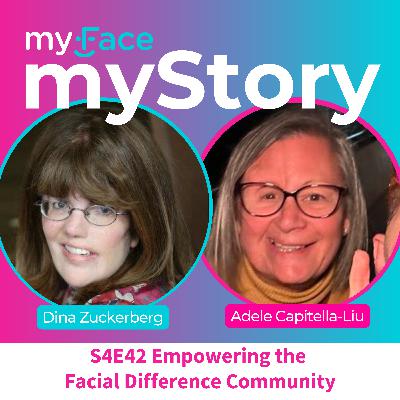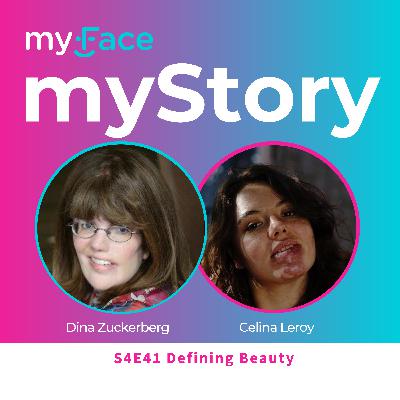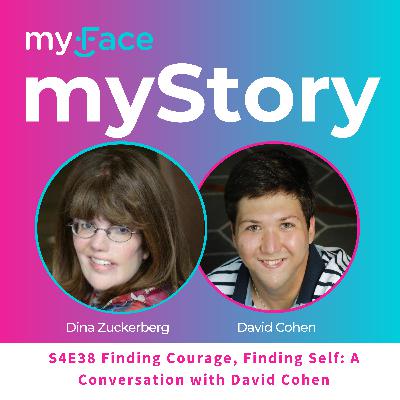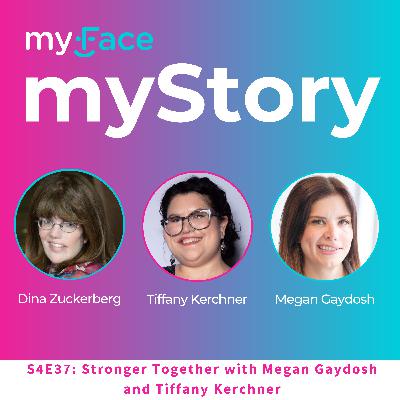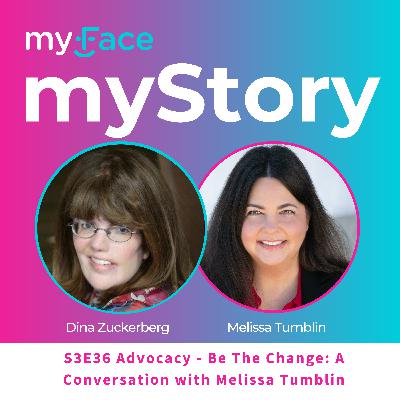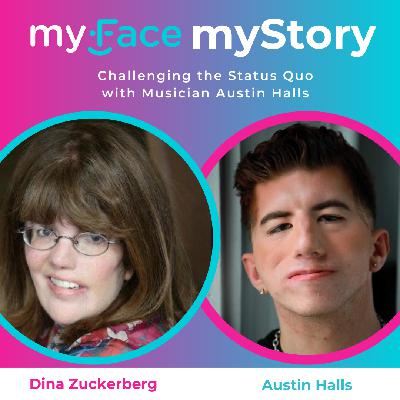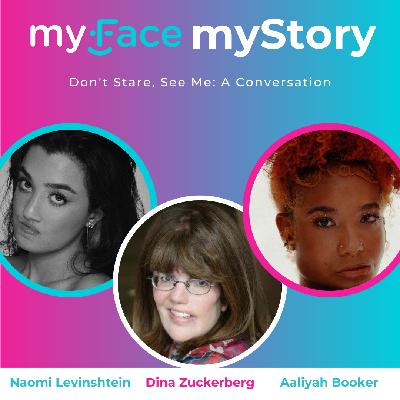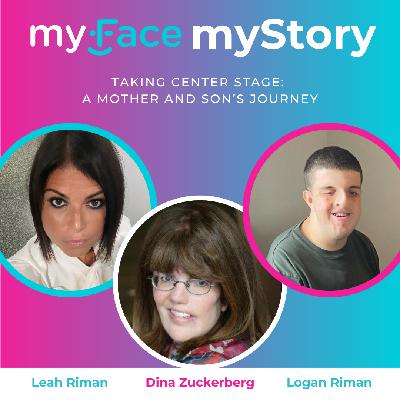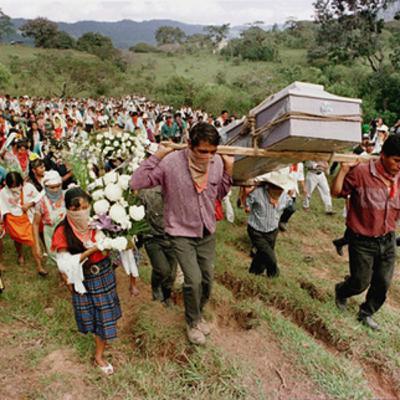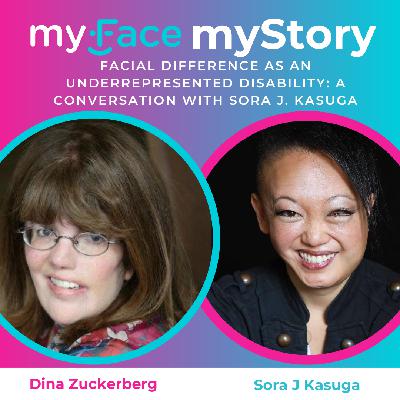Taking Control of the Narrative
Description
On this month's myFace, myStory podcast episode host, Dina Zuckerberg, is joined by Amy and Lazer Schefer, a dynamic mother-daughter duo who have turned their personal challenges into a mission of advocacy and support for the craniofacial and rare disease communities. Join us as we explore their inspiring story of resilience, the challenges they've overcome, and the impact they continue to make on the lives of others.
- [Announcer] Welcome to "My Face, My Story: "Voices from the Craniofacial Community," with your host, Dina Zuckerberg.
- Hello, and welcome to "My Face, My Story: "Voices from the Craniofacial Community." I'm Dina Zuckerberg, your host and director of Family Programs at My Face. Like many of you listening, I have a craniofacial difference. I was born with a cleft lip, a hearing loss, and no vision in my left eye. "My Face, My Story" is about people like us being seen and heard, about sharing stories within the craniofacial community and with others. This podcast episode is made possible through support from the Integra Foundation, committed to improving lives. By the way, whether you're watching on YouTube or listening through Apple Podcasts, click "Subscribe" now and we'll keep you updated on future episodes so you never miss out. And if you're a fan of "My Face, My Story," please rate and review the program on Apple Podcasts so we can get our message of inclusivity and empowerment to more people. Today I am joined by Amy Schefer and her daughter, Lazer. Amy is a passionate advocate for the craniofacial and rare disease communities. She is Lazer's mom and a director of Advocate Angel, an organization that helps guide families through the medical maze. She shares her intense journey as a medical mom, navigating with Lazer through dozens of surgeries and challenges to engaging in pioneering research efforts and advocating tirelessly in one-on-one family assistance endeavors and legislative action. Lazer is a 20-year-old patient advocate and public speaker with Goldenhar Syndrome. She has appeared on the TLC series "Two in a Million: A Face Like Mine." She has also appeared on numerous podcasts and radio interviews and has moderated panel discussions at Seattle Children's Hospital. Welcome Amy and Lazer. I really look forward to our conversation.
- Hi.
- Hi.
- Hello.
- Us too.
- Yeah. So, Amy, can you share the early days of your journey with Lazer's diagnosis and what were some of the initial challenges you faced as a mother navigating the medical care system and her care?
- Well, we're country folk, and one of the biggest challenges that we had is we were at a teeny tiny hospital, nobody had ever heard of Goldenhar. We had a great emergency room, I mean NICU doctor, who stayed up all night trying to figure out what condition this may be. But the fact that we were farther away from the central areas where medical care happened made it more difficult, And then early on, we also, we knew we needed to get to a craniofacial team.
- Right.
- The team that was assigned to us through our insurance was a not well-known team. They met once every three months. They brought, they brought somebody in who said, you know, who was a professor emeritus, you know, who said, "Wow, this is really, "you won't find a kid like this very often." And that was kind of like-
- Wow.
- Their amassed wisdom, and it was hard... to get referred to the top team in the state, and the top team in the state was in disarray. They kept losing their funding. So, one of the biggest challenges for me, aside from not knowing ahead of time, despite all the ultrasounds and stuff, that Lazer was gonna be different, one of the biggest challenges was just getting situated in the right medical team so that the quality of care could be better than what we started with.
- Mmm, right. And-
- Yeah.
- So you did not know, and did, and was there anybody else in your family that you knew of that had Goldenhar or? No, so this was a total-
- No, the one and only.
- Surprise for you.
- Yeah. And luckily my dad was a psychiatrist, so he went to medical school. So he asked all of his med school buddies, "What do you do in a case like this?" And they said, "Find a craniofacial team." That was pure luck-
- Right.
- And not something that most people have. And, you know, some of the reason I just became an advocate is because... the information that families have access to is so scattershot.
- Right.
- And if you don't have that information, your results are way different. And not only that information, but lots of other kinds of information. So-
- Mm-hmm.
- We also just didn't have really great facilities, we didn't have great home health agencies, we didn't have, you know, it was, I had to learn how to fire people who were coming to take care of Lazer who-
- Right.
- Who, you know, didn't do as good a job as they needed to.
- Right.
- Lazer had a trach and a G-tube at the beginning, and other things, and it, you know, substandard care doesn't cut it.
- Right.
- So, there are a lot of challenges, and you know, common sense, you would think, okay, when any person is born, they're, you know, the medical system will wrap you in its arms and all will be well, you'll know what to do, you'll be speaking with the right people, and it's kind of, no, you actually have to take some action on behalf of yourself and your family.
- Right.
- To get that, so.
- So, Lazer, growing up with Goldenhar Syndrome, what was some of the most significant challenges you encountered and how did you find the strength to overcome them?
- I have a couple different answers for this, but one is, which is a very common answer, is just learning how to deal with people's reactions to you.
- Right.
- And I had a couple of like really, really hard moments that triggered like a whole bunch of years' worth of not wanting to be seen in public or like trying to literally hide the left side of my face.
- Mm-hmm.
- Because that's what I considered to be the more different side. Then, another one of the harder things has been dealing with my face changing so many times.
- Mm-hmm.
- It's like I get used to the way my face looks and then I have another surgery that is ultimately, of course, for the better, like betterment of my health, or at this point, I'm just now at the point where I can, I'm getting surgeries to more even out my appearance as well.
- Right.
- But learning to love each face that has come into my life over the 20 years has been one of the more interesting challenges, let's say.
- Yeah.
- And one of the main things that has like helped with that, honestly is just taking time.
- Mm-hmm.
- It took a lot of time for me to really start to, like, listen when my mom and like... my other close family members would say that, look, you really are beautiful. And I would always brush it off like, "Oh, no, you're just saying that you're my parents, "come on, shush."
- Right, right, right.
- One thing that ended up really helping with that was I got really bored in 2020, you know, quarantine time.
- Mm-hmm.
- And I was on TikTok a little bit before that, but I started just posting a whole bunch of different, like, content regarding what it's like to live with a facial difference.
- Mm-hmm.
- And a lot of them were more funny, but some of them were really like expressing how it feels to look different. Even though I did, I have gotten quite a few like nasty comments over the same years, just sharing, sharing that part of myself really helped ground ground me in the sense that I, in the knowing that I am different and that's not a bad thing.
- Right.
- And different is beautiful.
- Exactly. And when you talk about, Lazer, about, you know, having surgeries in your face changing each time you have surgery, that's something that I've heard quite often from individuals in the craniofacial community, so I don't think you're alone in that. So you both have touched on it, but advocacy has become a significant part of both your lives. And so I'm wondering what motivated you to turn your personal experiences into a mission to support others in the craniofacial and rare disease communities?
- Well, I can say for me, naturally people started referring people to me because I had bushwhacked a path through the jungle with a machete, and they were like-
- Right.
- "Talk to this lady, figured it out." So I naturally was doing that and I was passionate about it. And even to the extent where I had some medical professionals referring people to me, 'cause I could say things they couldn't say. Like, in this previous state we lived, G-tube food, once a kid had a G-tube, the doctor was legally responsible for failure to thrive. I'm doing a little quote marks off the screen, and failure to thrive in Lazer's case was, they were putting formula through the G-tube that was a bunch of chemicals and that didn't, Lazer's body didn't like that.
- Right.
- It's kind of a simple matter. But the doctor had responsibility... Like, in other words, if you have a non-G-tube food kid, you can feed them, you know, Velveeta and Cheetos and, you know, gummy bears and nothing else and nobody gets in between you, not that you should.
- Right.
- But... if you take your kid off of the prescribed G-tube food, you can have your kid taken away in the state that I was living in, so it started at a very young age, 'cause this medical person from DSHS couldn't tell people, "to use goat milk... "or use the breast milk bank."
- You know, so she'd say-
- Right.
- "Talk to Amy." So, because t





